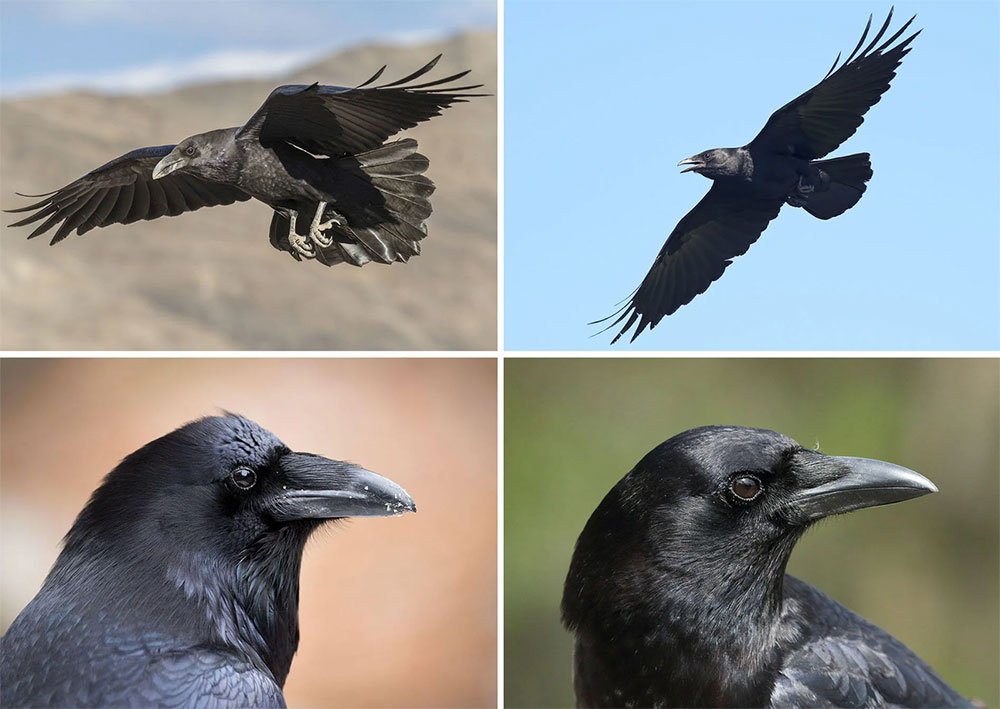How to Distinguish a Raven From a Crow
These black birds may belong to the same family and look similar in some ways, but several distinctive traits help set them apart.
You’re outside, enjoying a sunny day when a shadow at your feet causes you to look up. A large, black bird flies over and lands in a nearby tree. You wonder: is that a crow or a raven?
These two species, Common Ravens and American Crows, overlap widely throughout North America, and they look quite similar. But with a bit of practice, you can tell them apart.
You probably know that ravens are larger, the size of a Red-tailed Hawk. Ravens often travel in pairs, while crows are seen in larger groups. Also, watch the bird’s tail as it flies overhead. The crow’s tail feathers are basically the same length, so when the bird spreads its tail, it opens like a fan. Ravens, however, have longer middle feathers in their tails, so their tail appears wedge-shaped when open.
Listen closely to the birds’ calls. Crows give a cawing sound. But ravens produce a lower croaking sound.
By voice - While crows caw and purr, ravens croak and scream bloody murder. Listen and compare the American Crow to the Common Raven:
On the ground - A raven's strut is often punctuated by a few two-footed hops (see video below).
In flight
Ravens ride the thermals and soar, whereas crows do more flapping. Also, as mentioned in the podcast, the raven's tail resembles a wedge, compared to the rounded fan-like shape of the crow's.
Up close
Ravens have bigger, curvier beaks relative to crows. While both species have bristles at the base of the beak, the raven's are noticeably longer. Its throat feathers are also quite shaggy.
Thank you Audubon.org for this helpful information!
Top photo credit: Clockwise from top left: Common Raven; American Crow; American Crow; Common Raven. Photos: Ed Oakes/Audubon Photography Awards; Brian Kushner; Arend Trent/iStock; Andrew Lunt/Audubon Photography Awards



